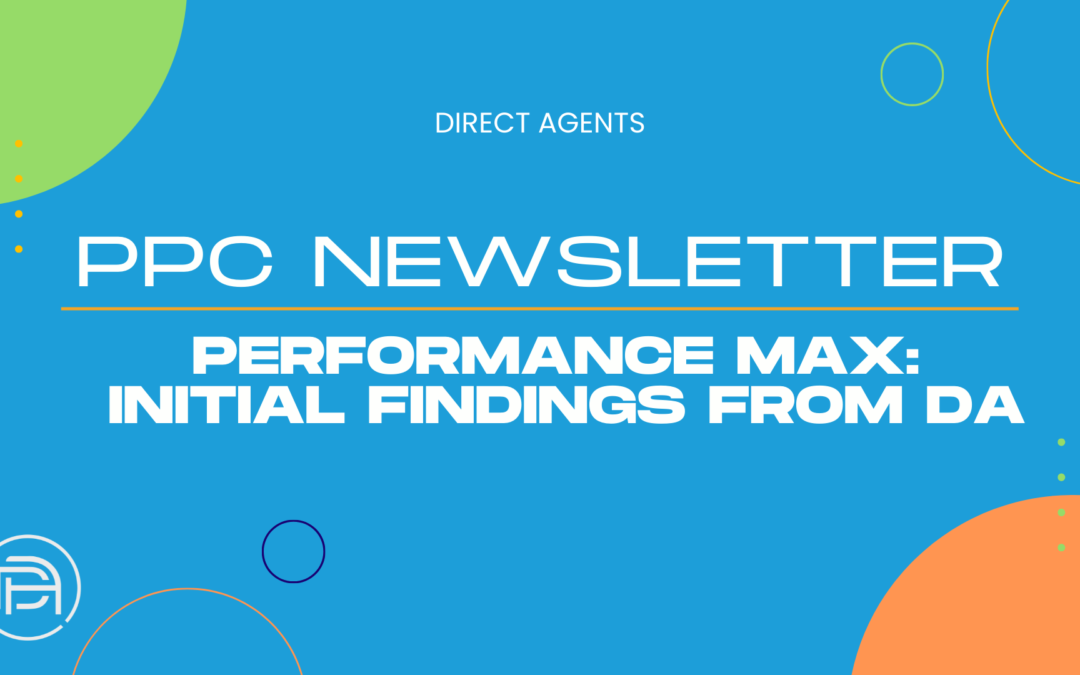The new fully automated Performance Max campaign has been launched across eCommerce clients at Direct Agents over the past month. The campaign encompasses multiple areas including Youtube, Display, Discovery, Gmail, and Google Maps. By targeting audiences based on audience signals, various ad formats will be automatically generated with single asset groups including videos, statics, and ad copy.
Before going into the impact on performance, let’s go over some important findings of the new campaign type itself.
First, Performance Max will be replacing Smart Shopping campaigns between July – September 2022 and will be automatically upgraded if not implemented earlier. Local Shopping campaigns are expected to be switched in August – September. That being said, it is a best practice to not have overlapping products or assets with Shopping campaigns to fully drive its potential as Performance Max will be prioritized when serving inventory for Shopping Feed. When launched, the Shopping campaigns will start to spend significantly less regardless of the budget breakdown for Performance Max to ramp up in its place. It is unclear whether this would be the case for Youtube and Google Display Network (GDN) currently. In the interim, Direct Agents will be leveraging Performance Max alongside other campaign types.
Second, there are no automated rules or scheduling features for Performance Max, as automated rules are only available on the Campaign level currently. Advertisers will have to create new asset groups when scheduling for promotions or for any other changes, and then manually update those asset groups. Third, video assets are a requirement for Performance Max. If a video asset is not uploaded by those managing the campaign, Google will automatically generate a video ad and serve via GDN. Using the Youtube Video Builder is recommended to create a video asset with images, superimpositions (titles, video, or graphics), and logos when video assets are not available. It is important to note that granular performance per asset group or asset is not available. However, we will be able to optimize based on the available search trends, consumer interest, persona insights, top creatives, and audience segments.
Some best practices for all business types including eCommerce and Lead Gen:
- Allow at least 6 weeks for the Machine Learning Algorithm to ramp up and have enough data to compare the performance
- Add at least 5 text assets (4 headlines & 5 descriptions) in each asset group
- Add at least 5 image assets (must include 1 landscape (1200×628 – 1.91:1) and 1 square (1200×1200)) in ƒeach asset group
- Add at least 1 video asset in each asset group (otherwise automatically generated with image assets)
- Use as many assets as possible
- Utilize Google Ads Conversion Tracking rather than Google Analytics conversion import to track video views or cross-device conversions
Performance Max has already shown its capabilities by laying out the groundwork for more automation and better results, so let’s dive into the initial findings from DA around the value and impact that Performance Max brings to brands.
For a highly regarded luxury women’s intimate eCommerce brand, Performance Max was a big hit from the beginning seeing over 500% ROAS in the first 2 weeks. However, it is clear that Google is prioritizing Performance Max and is ready to scrap the Shopping campaigns seeing almost a 10% drop in conversion shares from Shopping and decreased spend after Performance Max was implemented. The sister brand of this client saw a similar trend, but a more significant impact lifting ~15% of the overall conversions with a 10% drop in Shopping conversions in the first 2 weeks of launch.
Though Google is clearly prioritizing Performance Max for Shopping inventory, we have not seen similar results on the other network placements namely, Google Display Network or YouTube. A client of ours in the for-profit charity sector has seen success with its initial rollout. Within the first two weeks of launch Performance Max accounted for an additional 16% in conversion share. Just in the last 30 days performance max campaigns have accounted for almost 50% of total ad revenue in Google.

